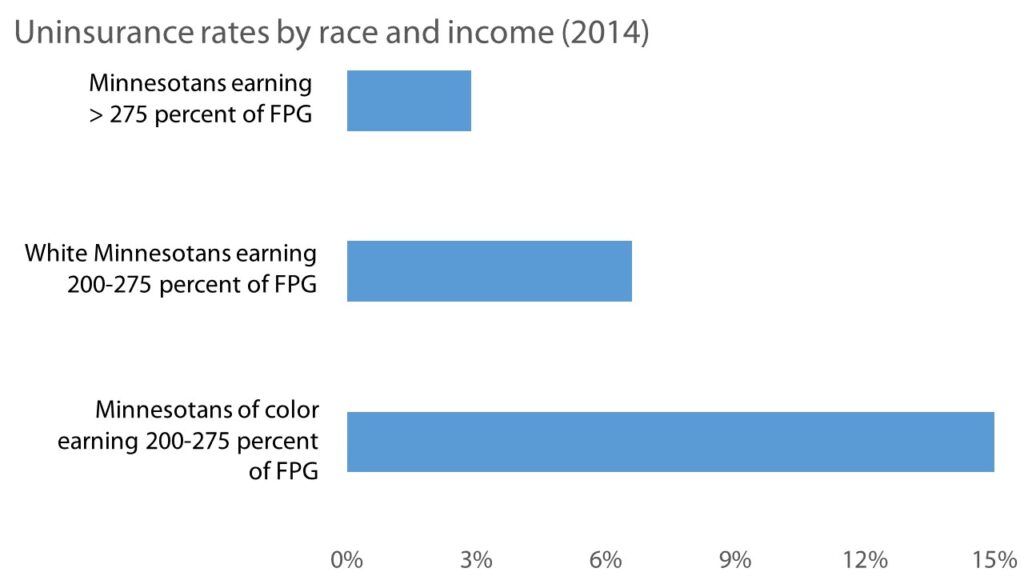Final negotiations over the Health and Human Services (HHS) budget ended without the inclusion of an important proposal that could have addressed one facet of the ugly racial inequities that have sat in the legislative spotlight since the release of Census data last September. Unfortunately, a plan to expand access to affordable health care in Minnesota failed to make it into the final supplemental budget bill. Making MinnesotaCare available to more working Minnesotans could have narrowed racial gaps in health insurance coverage because people of color are more likely to lack coverage through their employers.
About two-thirds of working Minnesotans receive health insurance through their employers, but there are drastic racial differences. About three-quarters of non-elderly white Minnesotans are covered by an employer-based plan, compared to less than half of the state’s people of color. This disparity exists nationally but is worse in Minnesota.
This disparity is clearly seen in the health insurance coverage rate for Minnesotans earning 200 to 275 percent of the federal poverty guidelines (FPG), or $24,000 to $33,000 for a single individual. In this income range, Minnesotans of color are more than twice as likely to lack health insurance compared to their white peers, and are more than five times as likely to lack coverage compared to Minnesotans earning more.

For working people whose employers do not offer health insurance, MinnesotaCare is an affordable health care option. It provides high quality insurance with low out-of-pocket costs and sliding-scale monthly premiums. Prior to 2014, Minnesotans earning 200 to 275 percent of FPG qualified for MinnesotaCare. A task force on health care finance, Governor Mark Dayton and the Senate all have proposed re-instituting eligibility. That could have narrowed the racial inequities in health insurance coverage rates, and the cost to do so would very likely be paid for (possibly entirely) with federal dollars.
MinnesotaCare is also an important health insurance option for entrepreneurs, which has implications for equity, too — the number of businesses owned by people of color in Minnesota increased by 53 percent from 2007 to 2012, even as the overall number of businesses in Minnesota shrank slightly over the same period.
The evidence is clear: our current health insurance system leaves out people of color at an alarming rate. This missed opportunity to bridge our state’s racial disparities by expanding access to MinnesotaCare should be taken up when the Legislature reconvenes next year.